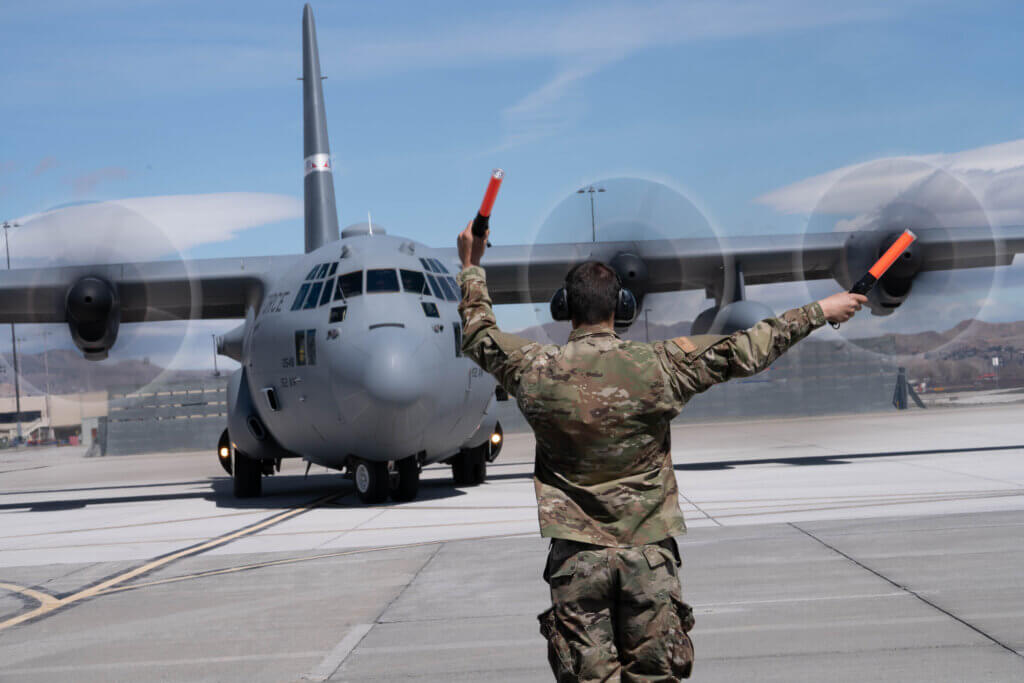NEVADA AIR NATIONAL GUARD BASE, RENO, Nev.- On Wednesday, March 29, 2023, the 153rd Airlift Wing from Cheyenne, Wyoming attended the annual Advanced Mountain Airlift Tactics School (AMATS) training hosted by the 192nd Airlift Squadron at the Nevada Air National Guard Base.
AMATS is a training syllabus designed to expose aircrew members to high altitude mountainous flying environments that they normally do not get to encounter. Aircrews are given the opportunity to execute flying low altitude missions in dangerous terrain which provides tactical advantages over adversaries, but the risks involved demand much more scrutinized planning to ensure safety and mission success.
The 192nd Airlift Squadron and the 153rd Airlift Wing worked jointly with the Marine Corps Mountain Warfare Training Center (MWTC) based out of Bridgeport, California. MWTC coordinated with their Air Force counterparts in order to execute low level routes in canyons, climb-outs over terrain, and short-notice on-call airdrops.
In total, the course is four days long. With day one being full of academics, where they set the stage for the purpose of the course, based on past safety incidents. The crews then plan and fly the following three days with increasing workload and complexity.
RELATED: AFRC, Mercy hospitals training agreement benefits multiple parties
Lt. Col. Joseph Jaquish, AMATS Instructor Pilot from the 192nd Airlift Squadron, said, “Our local area around Reno provides the ideal training environment to plan and fly into aggressive terrain. We work in conjunction with the MWTC in Bridgeport, California to demonstrate high temperature, high altitude, heavy weight aircraft operations in hazardous terrain. Together with the MWTC, we provide a safe training environment for crews to plan, fly, then debrief their missions.”
Reno, Nevada is considered such an ideal training environment due to its varying temperatures that can often times fluctuate from one extreme to the other, combined with the high elevation and mountainous terrain, make it the perfect area for crews to train in and mirror some of the most challenging environments to fly in the world.
“In all my years of experience, I honestly can’t imagine a better place for it,” said Jaquish. ”No other airlift squadron has the environment in terms of airspace and terrain that we do, not one. That combined with our relationships with our Army counterparts, Herlong, Hawthorne, Fallon Naval Air Station and the Marine Corps Mountain Warfare Training Center, there simply isn’t a better place to conduct this course.”
If a crew were to be tasked a mission into a similar environment without adequate experience and planning, the chance of mission failure and safety risks increase dramatically.
“Hands down, the best part, is watching the crew members develop throughout the course. They’re exposed to challenges above and beyond normal training profiles, but the same challenges could be tasked to us at any moment for joint exercises, emergency response, or contingency operations,” Jaquish said. “Watching their growth into becoming expert tactical airlifters is the best part. By the end of the course, they make it look ‘easy’, but ‘easy’ couldn’t be further from the truth.”










